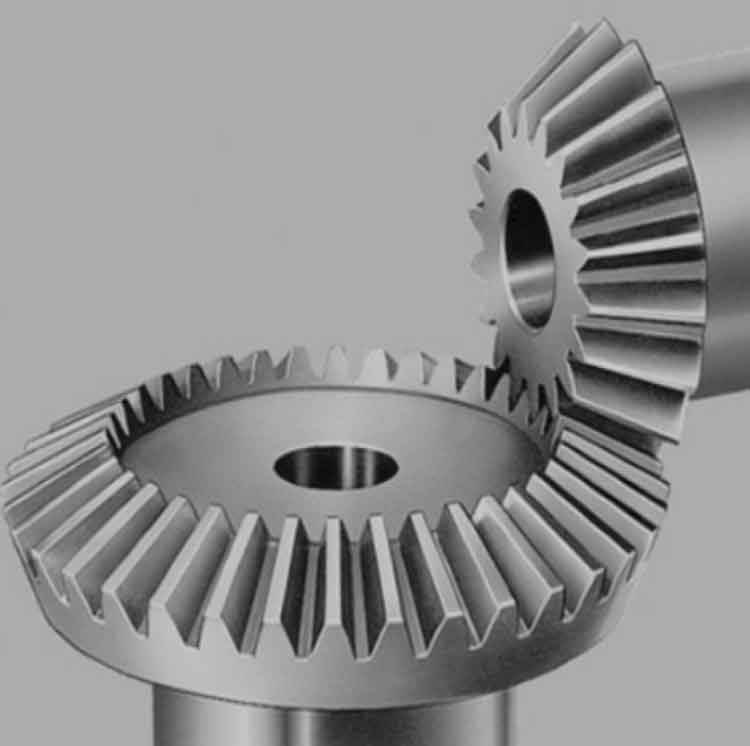Gear meshing and alignment are critical aspects of straight bevel gear systems that require careful attention to ensure optimal performance. Here are some challenges that can arise in gear meshing and alignment, along with strategies to overcome them:

- Gear Tooth Contact Pattern: Achieving proper gear tooth contact pattern is essential for efficient power transmission and minimizing wear. One common challenge is obtaining an optimal contact pattern, which ensures even load distribution across the tooth surfaces. Simulation software and analytical methods can be used to optimize gear geometry and tooth modifications to achieve the desired contact pattern.
- Backlash Control: Backlash refers to the clearance between mating gear teeth. Excessive backlash can lead to issues such as noise, vibration, and reduced accuracy. On the other hand, insufficient backlash can cause binding or premature wear. Careful design and manufacturing processes should be employed to control backlash within the specified tolerances and ensure smooth gear meshing.
- Alignment Accuracy: Proper alignment of straight bevel gears is crucial to prevent misalignment-related issues. Challenges may arise in aligning gears accurately due to manufacturing tolerances, assembly errors, or thermal expansion. Precise alignment can be achieved through the use of alignment fixtures, dial indicators, laser alignment tools, and skilled assembly techniques. Alignment should consider factors such as gear tooth contact pattern, axial runout, and radial runout.
- Gear Tooth Wear: Wear can occur on gear teeth due to factors such as load, speed, lubrication, and material properties. Adequate lubrication with the right type and viscosity of lubricant is essential to minimize wear. Regular inspection and maintenance should be conducted to monitor tooth wear and identify any signs of damage or excessive wear. Timely replacement of worn gears or tooth surface reconditioning can help maintain gear performance and prevent catastrophic failures.
- Axial and Radial Runout: Axial and radial runout refer to the deviation of the gear tooth surface from its intended position. Excessive runout can cause misalignment, increased noise, and reduced gear performance. Precision manufacturing processes, such as accurate machining and grinding techniques, can help control runout within acceptable limits. Quality control measures, such as proper inspection and metrology techniques, should be employed to verify gear geometry and runout.
- Temperature and Thermal Expansion: Temperature variations can affect gear meshing and alignment due to thermal expansion. Differential expansion rates between gear components can lead to misalignment and altered gear tooth contact patterns. Design considerations, such as appropriate material selection and thermal analysis, can help mitigate the effects of temperature variations and minimize the impact on gear performance.
- Maintenance and Inspection: Regular maintenance and inspection are crucial for identifying and addressing gear meshing and alignment issues. This includes routine lubricant analysis, gear inspection for wear or damage, and verification of alignment parameters. Implementing a preventive maintenance program allows for early detection of potential problems and ensures the longevity and performance of straight bevel gear systems.
By addressing these challenges through careful design, precision manufacturing, proper alignment techniques, and regular maintenance, the gear meshing and alignment of straight bevel gears can be optimized. This optimization leads to improved gear performance, reduced noise and vibration, increased durability, and enhanced overall efficiency in gear systems.
